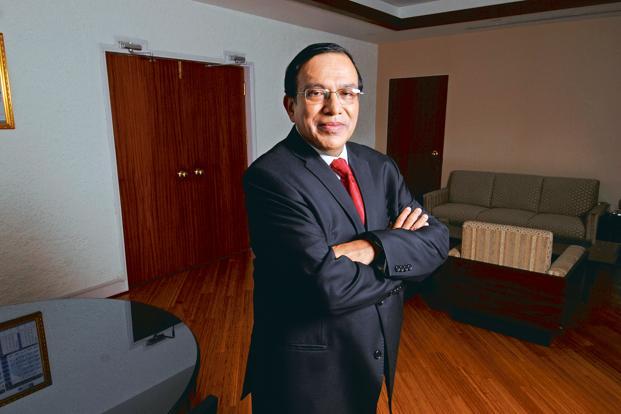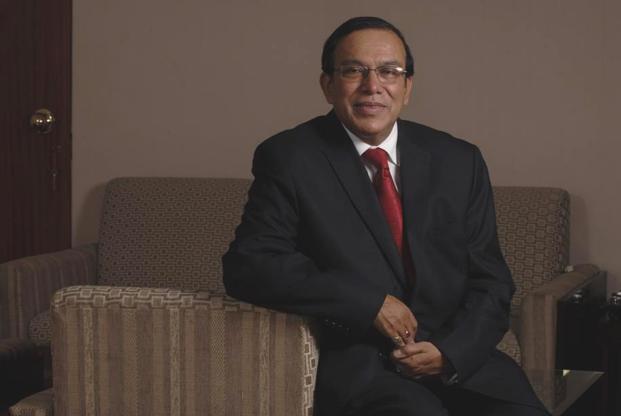Absurdist playwrights would turn in their graves looking at what’s happening in the Indian financial system.
A historic low growth in bank credit is accompanying an unprecedented surge in liquidity. In February, the Reserve Bank of India (RBI) in its sixth bimonthly monetary policy shifted the stance of the policy from accommodative to neutral and left the repo rate, or the rate at which the Indian central bank lends money to the commercial banks, unchanged at 6.25%, but the three-month treasury bill is now trading at 5.7% and one-year treasury bill at 6.10%, much below the repo rate, making a mockery of the signalling rate.
The villain of the piece is the deluge of liquidity—over Rs4 trillion excess money—following demonetization or the currency swap programme which replaced roughly 86% of Rs17.97 trillion worth of currency in circulation in seven weeks between November and December.
In the past, when the RBI followed an ultra-loose monetary policy to mitigate the impact of the collapse of iconic US investment bank Lehman Brothers Holdings Inc. leading to a transatlantic financial crisis, over Rs1 trillion excess liquidity flooded the system between April and November 2009—touching Rs1.6 trillion on one day in September 2009, the highest before the current deluge.
To be fair, the liquidity scenarios are not exactly comparable as the total deposits in the banking system was far less then and banks’ cash reserve ratio (CRR), or the portion of deposits that banks need to keep with the RBI, was higher. Since February 2013, CRR has been pegged at 4%.
To suck out excess liquidity generated by the currency exchange programme, the RBI first asked banks to maintain an incremental CRR of 100%, in November (in addition to the 4% CRR that Indian banks are to keep with the RBI). This way, it sucked out around Rs3.24 trillion excess liquidity from the system. Subsequently, another Rs6 trillion was drained through short-term cash management bills under the so-called market stabilization scheme or MSS. Such bills have all been redeemed and the money has come back to the system. A measly 4.4% year-on-year credit growth till 17 March, its historic low, has added to the problem.
Deluge of liquidity
Clearly, the challenge before the RBI in its first bimonthly monetary policy of the new fiscal year is how to tackle the deluge of liquidity.
The February policy signalled the end of the easy money regime which started in January 2015, when the RBI cut its policy rate by 175 basis points in stages. Most analysts were expecting yet another rate cut as there was a sharp decline in retail inflation. It dropped to 3.41% in December from 3.63% in the previous month—its lowest since November 2014. However, the six-member monetary policy committee or MPC downplayed this and focussed on the upward risks to inflation. The year-on-year retail inflation slowed further to 3.17% in January but rose to 3.65% in February 2017, driven by food inflation even as the so-called core inflation moderated to 4.8%, down from 5% in January, partly due to favourable base effects.
Inflation apart, all other macro-economic factors are much better than what they were in February. The Indian rupee strengthened past the 65-mark to hit a fresh 17-month-high on a weak dollar globally and continued inflows from foreign investors in the local equity and bond markets. The local currency closed at 64.8450 to a dollar on Friday, surging around 4.65% since January.
The other positive factors are a drop in the prices of crude and greater political stability post the Bharatiya Janata Party’s landslide victory at the critical Uttar Pradesh assembly elections. Indeed the US Federal Reserve raised its interest rates by 25 basis points in March, as widely expected by the markets, but it looked less hawkish than feared.
Even against this relatively benign external as well as domestic backdrop, nobody would expect the RBI to cut its policy rate or even change its stance back to accommodative but everyone would watch how RBI governor Urjit Patel plans to tackle the abundance of liquidity. Incidentally, the MPC’s mandate does not include liquidity management. This means MPC will discuss the interest rate and stance of the policy at its two-day meeting on 5-6 April but Patel and his team will have more things on their plate.
For all practical purposes, liquidity management and interest rate are inseparable. For instance, in a tight liquidity scenario, the repo rate or the rate at which the RBI lends money to the banks is the signalling rate while when there is plenty of money in the system, and banks lend money to the RBI, the reverse repo rate becomes the signalling rate.
At the moment, there is at least Rs4 trillion surplus liquidity in the system. It will cross Rs5 trillion when the government starts spending in a big way in the beginning of the fiscal year. It will rise even further if the RBI starts buying dollars from the market to stem the appreciation of the local currency. For every dollar it buys, an equivalent amount of rupee flows in to the system.
If banks want money from the RBI, the central bank gives overnight money at the repo rate (6.25%) against government securities as a collateral. The amount that a commercial bank can borrow from the central bank is capped at a quarter percentage point of its net demand and time liability or NDTL, a loose proxy for deposits. For term repo—when a bank takes money from the RBI for seven days and 14 days—the amount is capped at 0.75% of a bank’s NDTL. At these auctions, the floor rate is 6.26%.
If banks have excess liquidity (which now they have), they park the money at RBI’s reverse repo window at 5.75%. Apart from overnight money where the rate is fixed, banks can offer money for seven days and more and the rates are fixed at auctions but cannot be more than 6.24%.
Unlike the repo, there is no cap on the amount of money that can be parked at the reverse repo window. This means banks can lend as much as they want to but the central bank must have securities to offer as a collateral to absorb the money.
Since the RBI has securities worth around Rs7 trillion, if the wave of liquidity rises further, the central bank may find it difficult to absorb them.
Tools to soak up excess liquidity
So, it must look for other instruments besides the reverse repo window to soak up the liquidity. One obvious option could be raising banks’ CRR. The central bank can also sell securities under the so-called open market operations or OMO to drain excess liquidity. CRR as an instrument is perceived to be permanent in nature and the central banks do not tinker with it frequently as typically any change in CRR signifies a change in the stance of the monetary policy.
The OMO, on the other hand, pushes up the bond yield. This means, it will impact the cost of the government borrowing. The Indian government is slated to borrow Rs3.72 trillion on a gross basis in the first half of 2018. At 64.1% of the annual borrowing target, the first half borrowing is higher than usual but the net borrowing—Rs2.32 trillion—is lower compared with last year.
Yet another option is floating bonds under the market stabilization scheme or MSS to stamp out liquidity. The ceiling for the MSS in 2018 has been kept at Rs1 trillion.
The bonds floated under MSS are not used to bridge the fiscal deficit but the government bears the cost of it. As far as other instruments are concerned, RBI incurs the cost of mopping up liquidity through OMOs and its reverse repo window even as CRR is a cost for the banks. They don’t earn any interest on the money kept with the RBI in the form of CRR which otherwise would have fetched them interest income, had they given loans or invested in bonds.
The time is ripe to look for new instruments to absorb liquidity. One of them could be a remunerative CRR whereby the banks will continue to get zero interest on current level of 4% CRR but will be given—say 4%—on incremental CRR. A 2% incremental CRR will soak up around Rs2.1trillion.
There have been discussions on a new a tool to strain excess liquidity—a low remunerated standing deposit facility. The expert committee to revise and strengthen the monetary policy framework, headed by Patel, suggested this in January 2014. The idea is to offer an avenue to the banks where they can park their excess liquidity and the RBI would not need to provide any collateral to absorb this.
How much interest should the banks earn on such a deposit? In 2003, an internal RBI group on liquidity adjustment facility, which probably for the first time spoke about the standing deposits, had recommended that the interest rate offered on such deposits should be below the repo rate.
Can this be a rate between repo and reverse repo? Or a much lower rate—say 4%—which most banks are offering to their savings bank customers? The European Central Bank (ECB) uses the standing deposit facility rate as one of its three interest rates. It defines the interest banks receive for depositing money with ECB overnight.
There are two other rates—the rate for the main refinancing operations or MRO and the rate on the marginal lending facility. The MRO rate defines the cost at which the banks borrow from ECB for one week and when the banks need money overnight, they can borrow from the marginal lending facility at a higher rate.
If the RBI keeps the standing deposit facility rate much lower than the repo and even the reverse repo rate, it will certainly save on the cost of absorbing excess liquidity but run the risk of making the effective policy rate much lower as the standing deposit facility rate will become the anchor for overnight rate.
The Patel report spoke about developing a term money market where 14-day repo will be the signalling rate; it is in favour of using the standing deposit facility purely as a tool to soak up excess liquidity and not an interest rate signal. We will have to wait how it pans out.
Besides, it would take a while to create the new architecture as the RBI Act needs to be amended to introduce the standing deposit facility.
Meanwhile, the RBI could probably use an array of instruments to drain liquidity which will continue to slosh the system till credit offtake gains pace. For instance, OMO can be used to suck out liquidity that arises out of dollar buying while a combination of MSS, reverse repo and remunerative CRR can drain the money that banks do not need at the moment.
Both the December 2016 and February 2017 MPC meetings made it amply clear that the primary objective of the Indian central bank should be to secure the 4% inflation target. Theoretically, the deluge of liquidity is a threat to inflation but it will not translate into reality as long as credit growth does not pick up. At the moment, there is hardly any taker for money and bad loans-laden banks are also wary of lending.
I am sure that a strong rupee, drop in crude prices and banks’ willingness to cut loan rates are music to the ears of the Indian central bank but the challenges are an overwhelming liquidity, ballooning bad assets and an insipid loan growth in the world’s fastest growing large economy.
Will the monetary policy show ways to tackle them? For a change, this April no one really cares about interest rates and the stance of the monetary policy.



